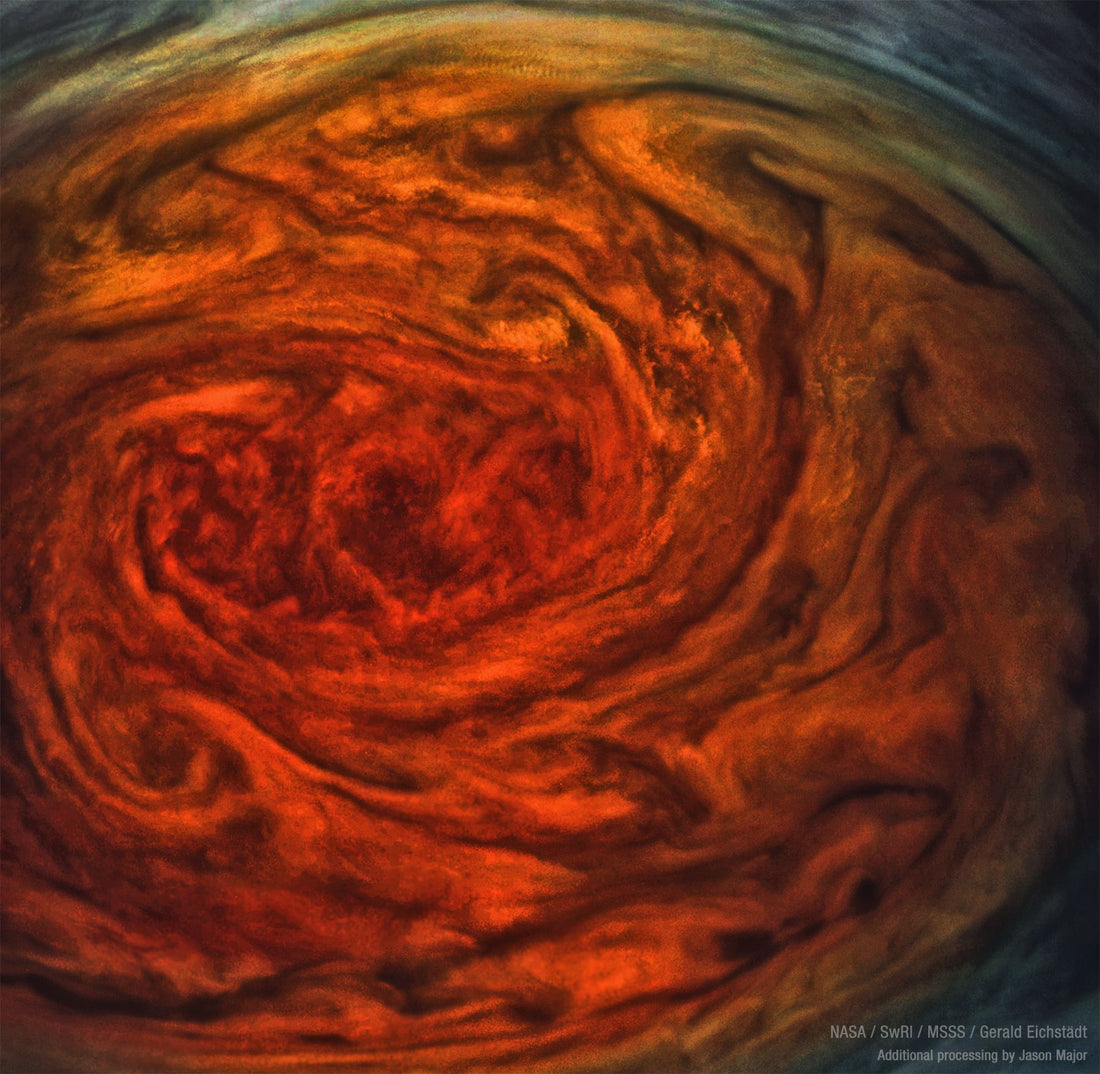
Why doesn’t Jupiter’s Red Dot ever end?
Share
It is that time of the week and we have selected an interesting question from a faithful follower about the very exciting Jupiter.
“Hey A.R.S.E. why doesn’t Jupiter’s red storm ever end?” - Jonas

Thanks for the question, Johnathan.
The famous Red Spot of Jupiter is a gargantuan thunderstorm, more than twice the size of the Earth. It has been raging for centuries, making its oval appearance one of the most famous landmarks in the Solar System. It consists of several storm cells with wind speeds of over 430 km/h, constantly pouring rain of ammonia and lightning, a thousand times more powerful than on Earth.

The Red Spot is not the only storm in Jupiter, there are at any time about a dozen other ones raging, but they are significantly weaker and smaller and this dissipates quicker. The reason why such storms on Jupiter last for such very long times when compared with Earth’s similar storms, is their sheer size. Storms on Earth, like Katrina, are only a few km deep and thus dissipate relatively quickly by friction as they are dragged along the cold surface. They also have relatively little energy to start with. However, Jupiter and the other gas giants of the Solar System have no solid surfaces, but consist entirely of clouds, getting hotter and hotter further inward the planet’s core. The Red Spot of Jupiter is calculated to be about 500 km deep and constantly feeds from the scorching hot and pitch black depths of the planet.

However, astronomers have found that the Red Spot has been shrinking in size and diminishing in appearance at a consistent rate. Photos made by the Juno probe orbiting Jupiter show how the spot extends “arms” of clouds from its edges, which break off and gradually fade away, removing energy from the storm. The once mighty red oval is already now a much smaller brownish circle and is by some experts expected to fully dissipate already within the next couple of decades.
You’ve come this far…
Why not venture a little further into A.S.S. - our exclusive Australian Space Society.
And keep thrusting Australia into the deep unknown…
#Space_Aus




